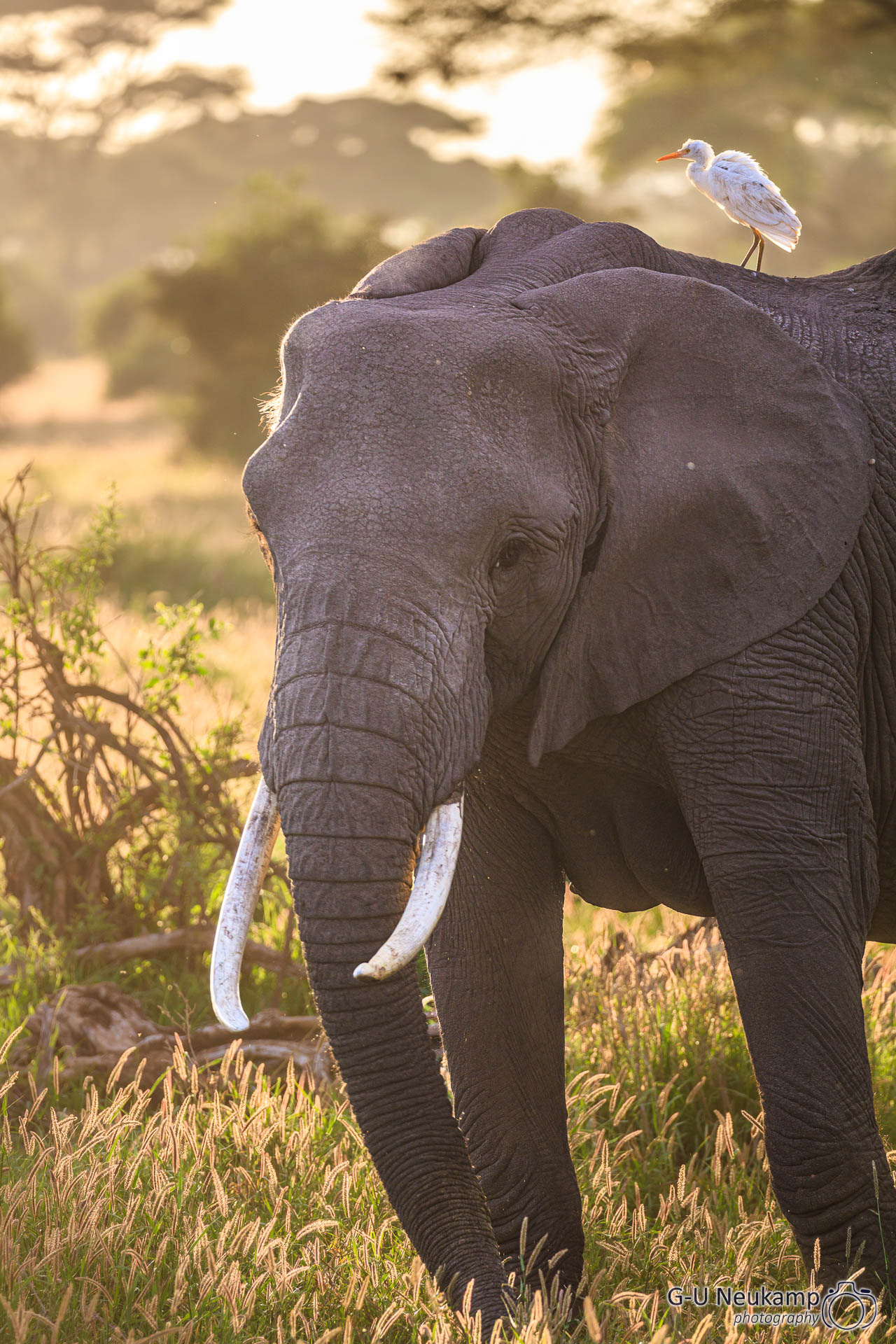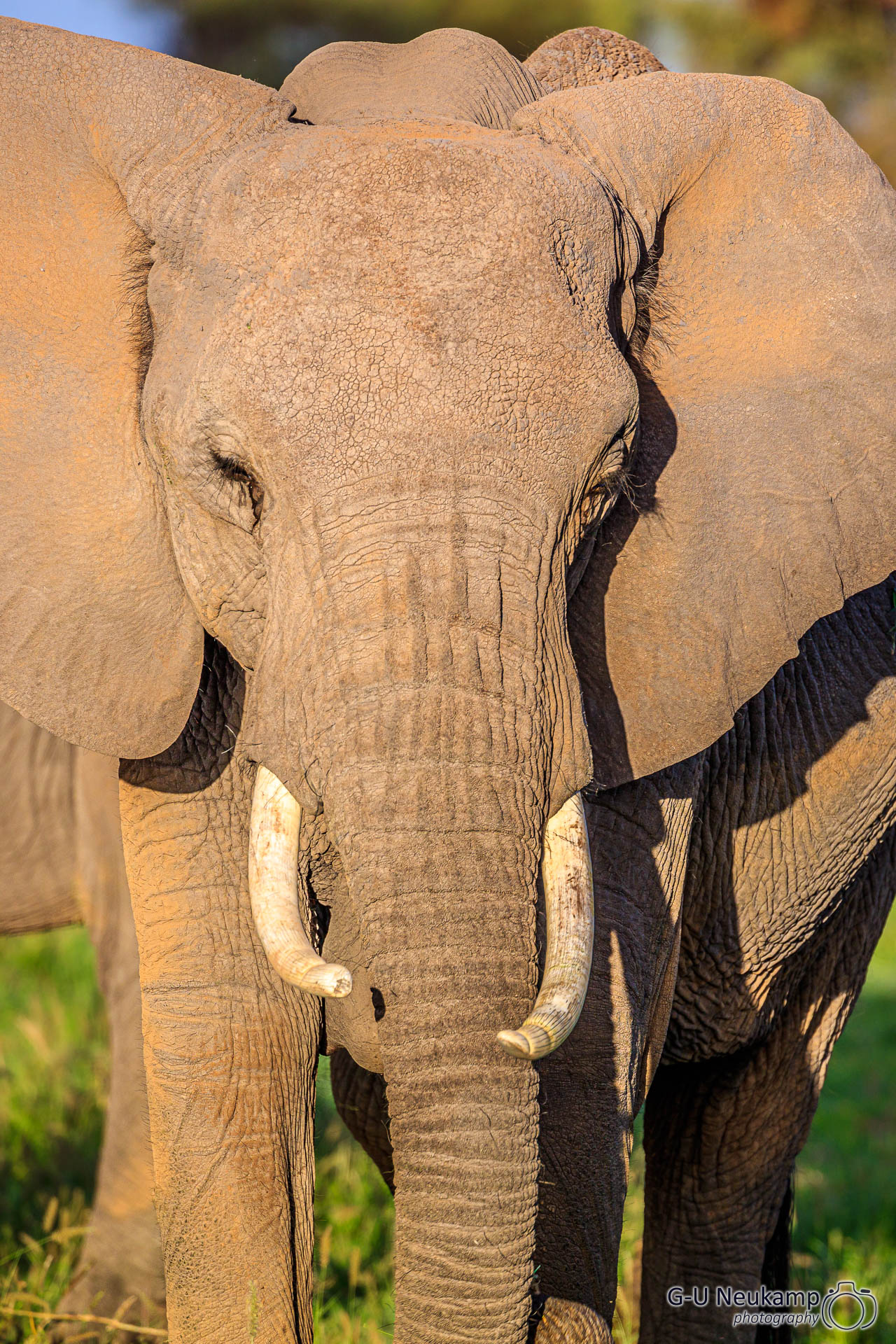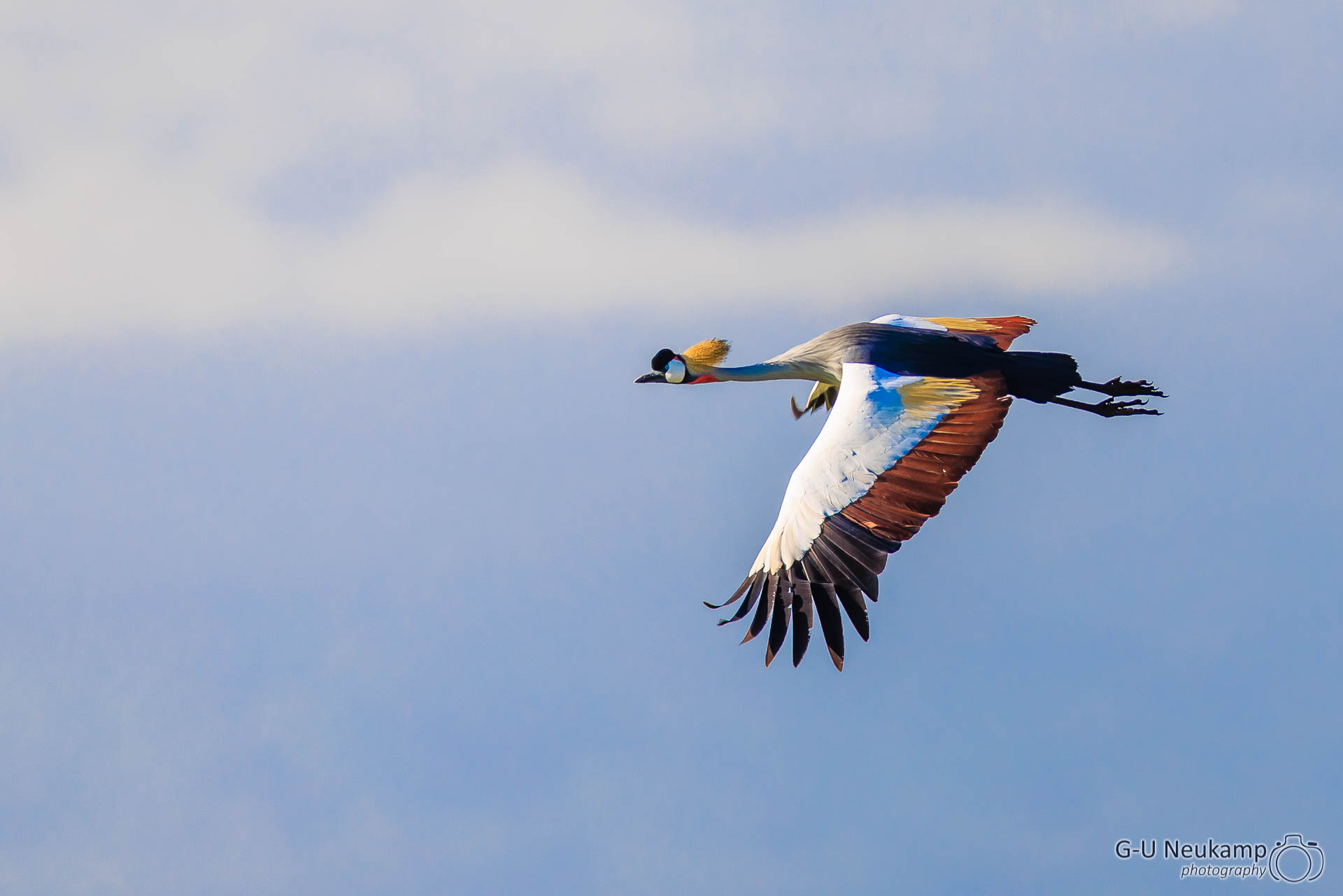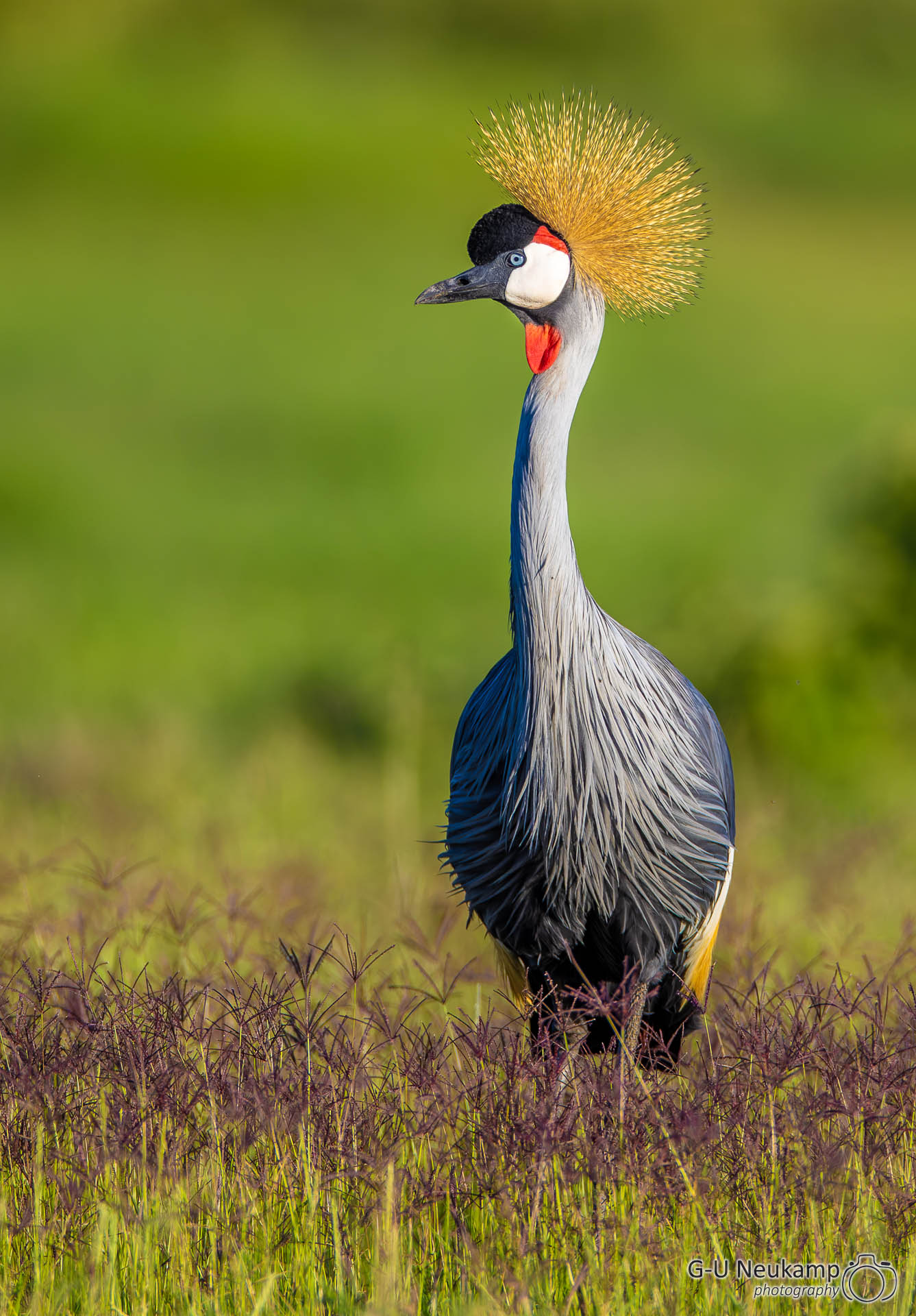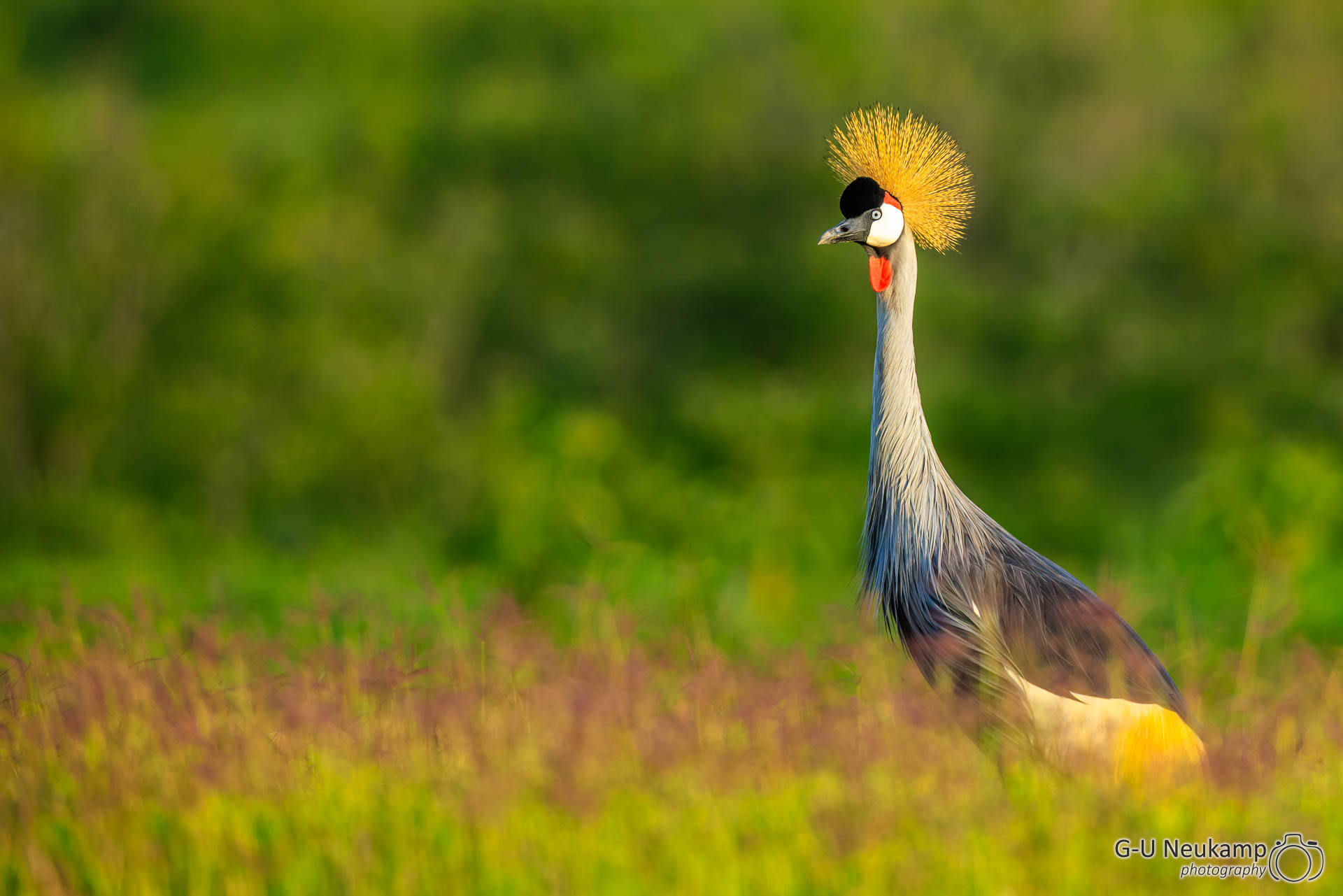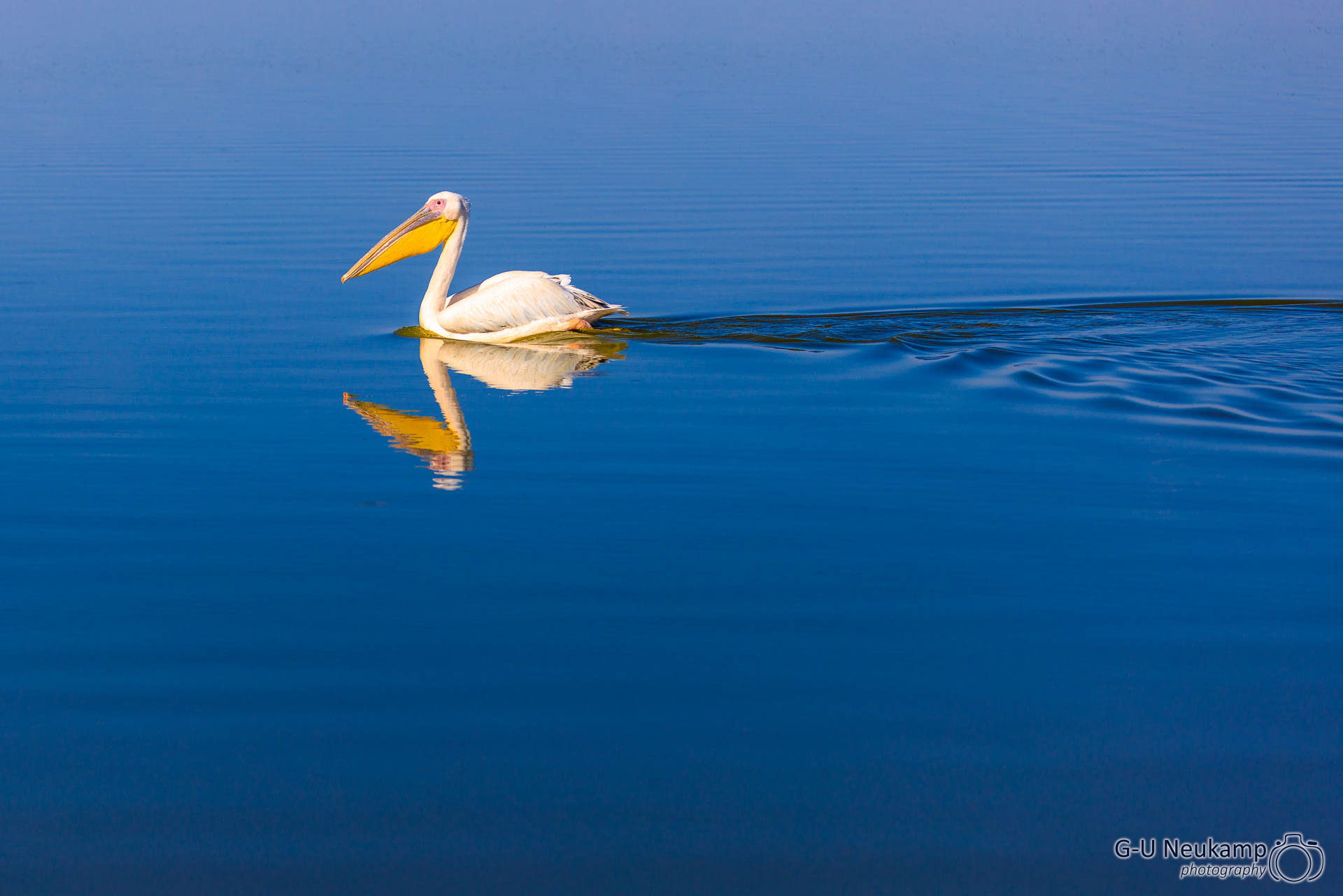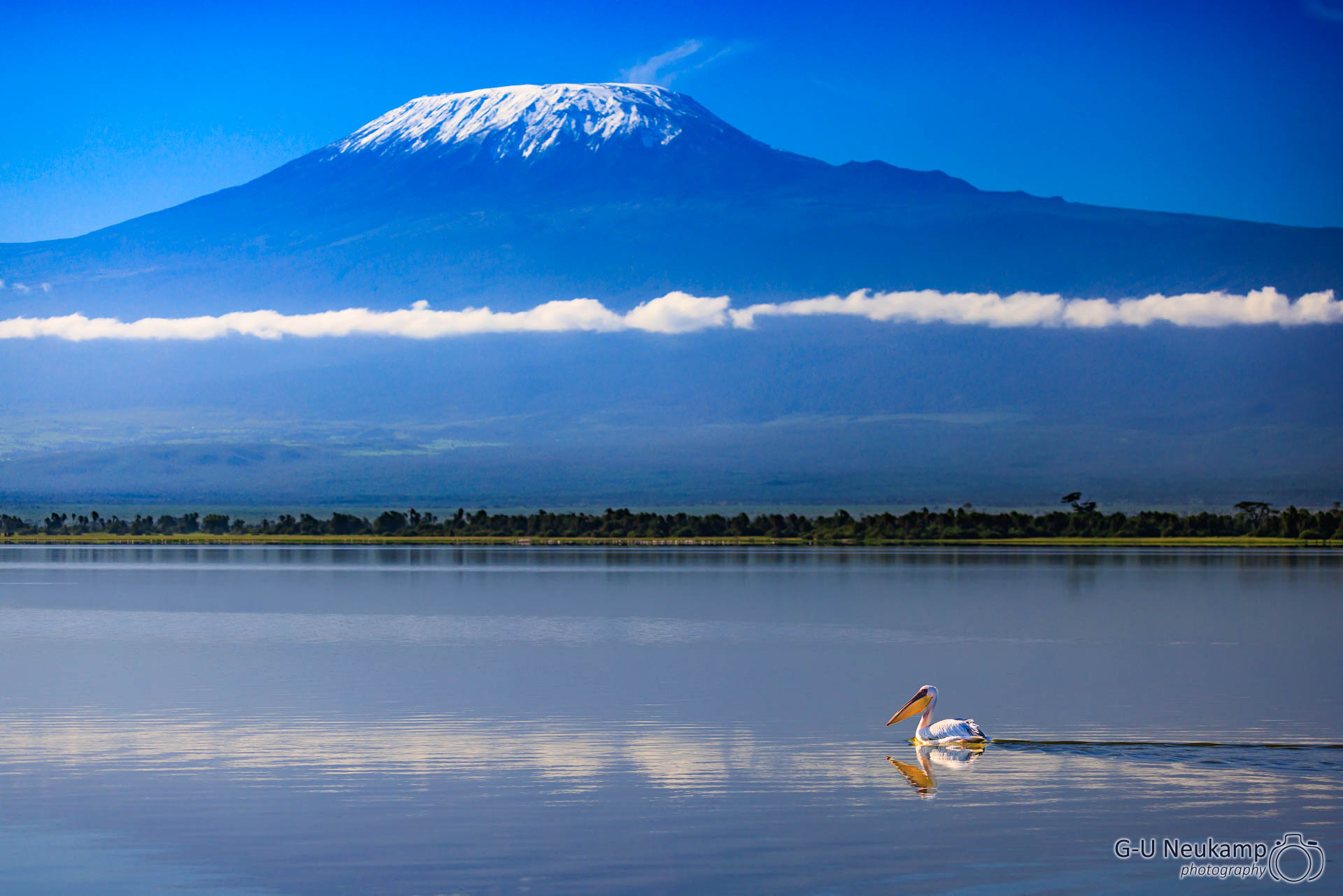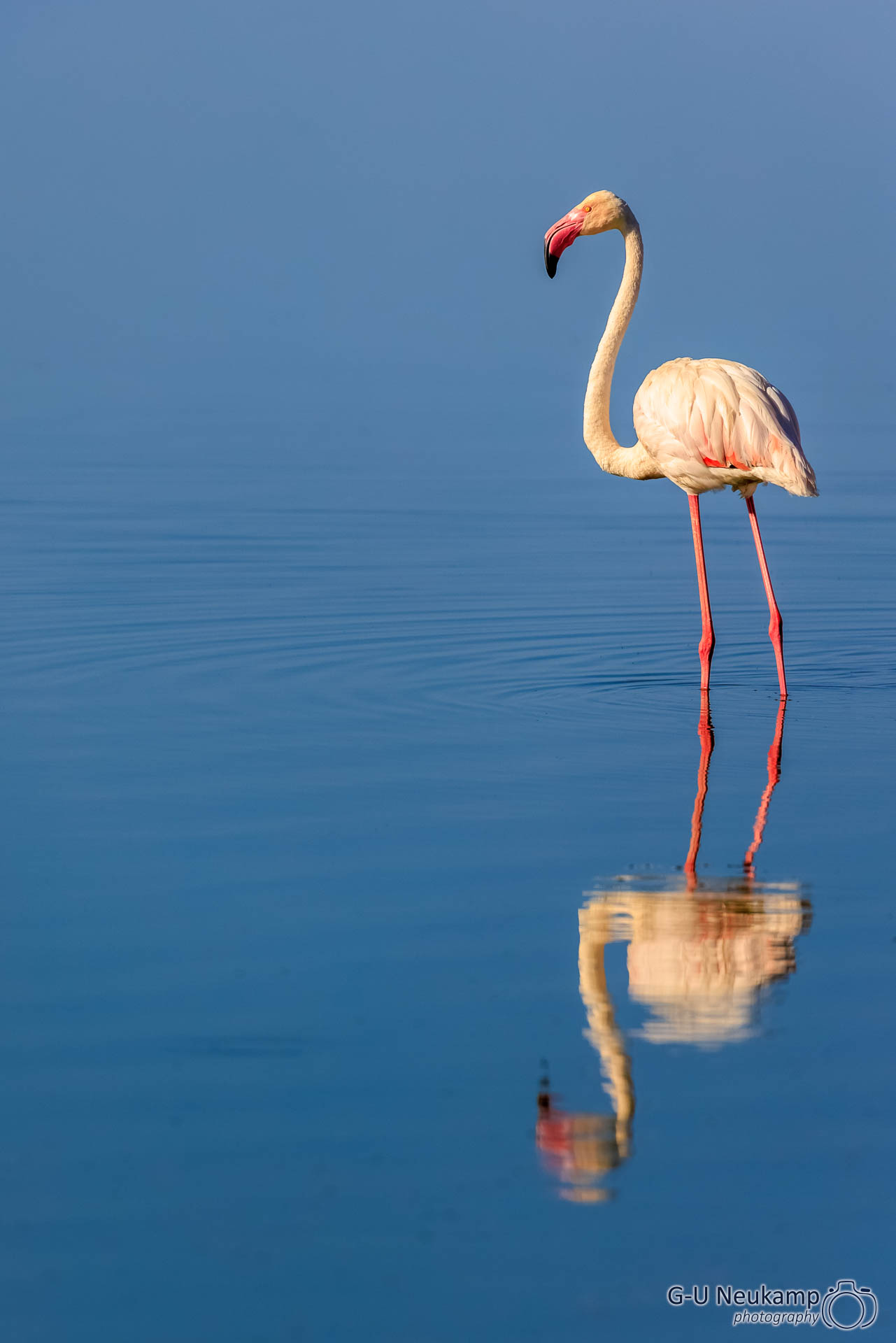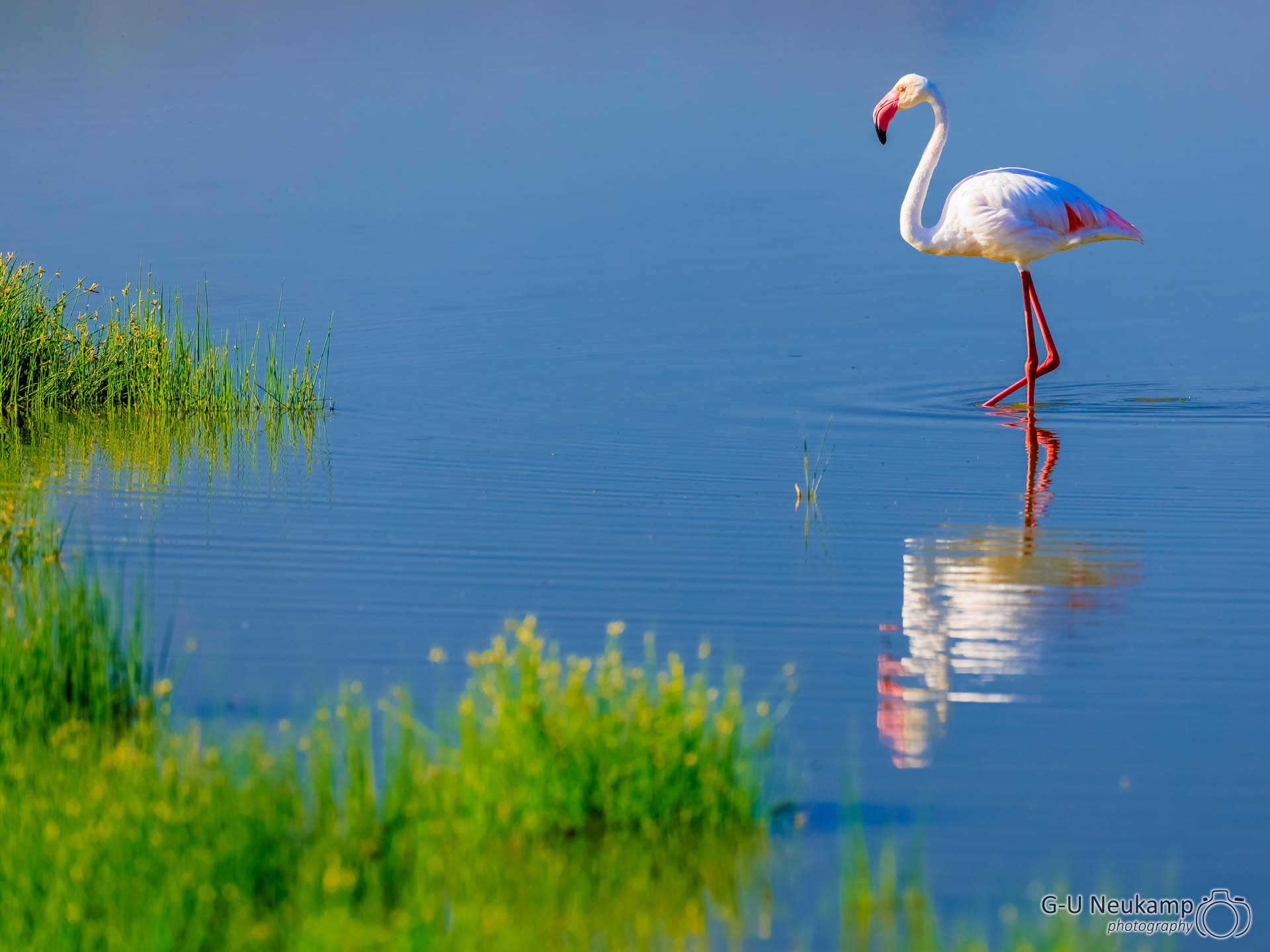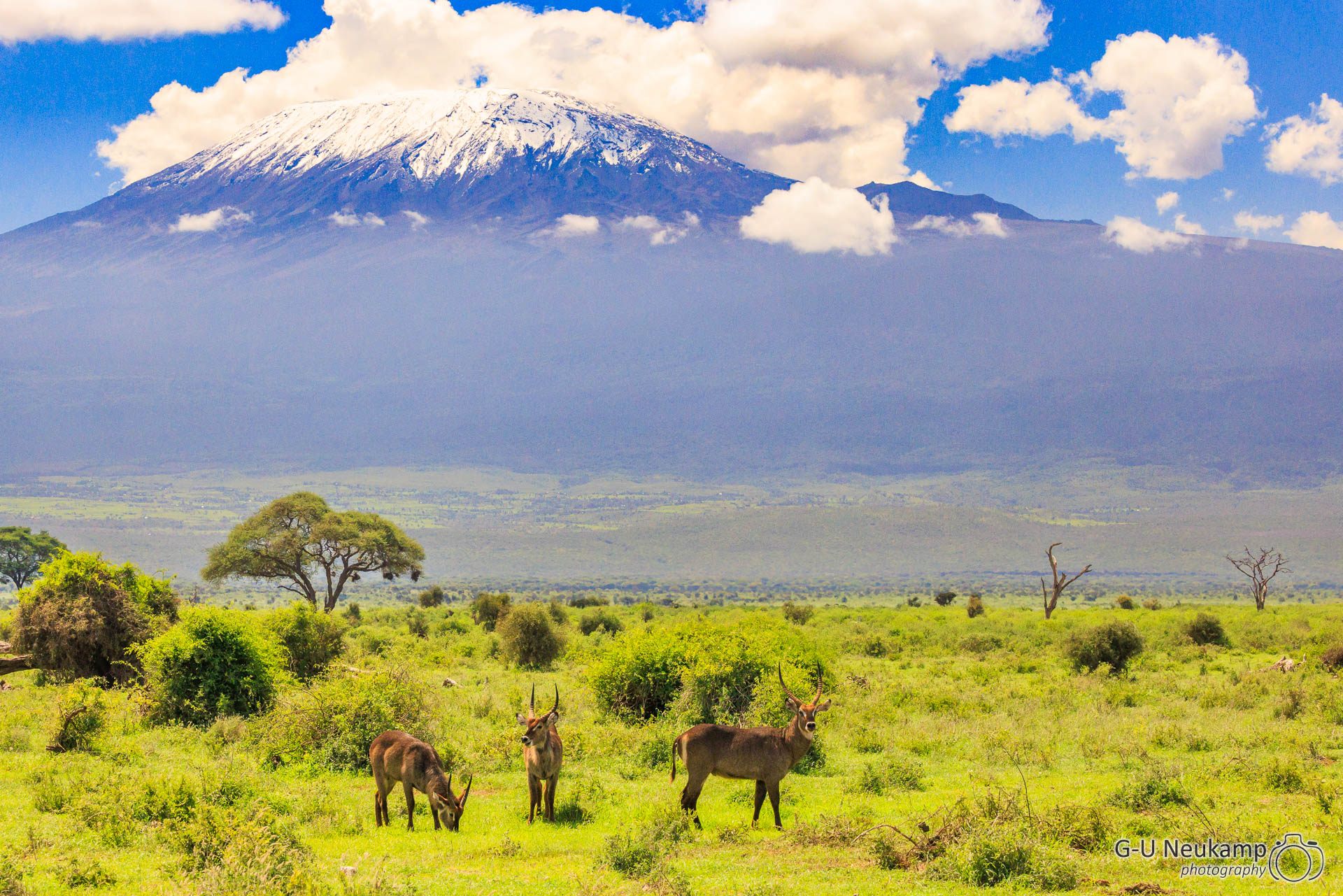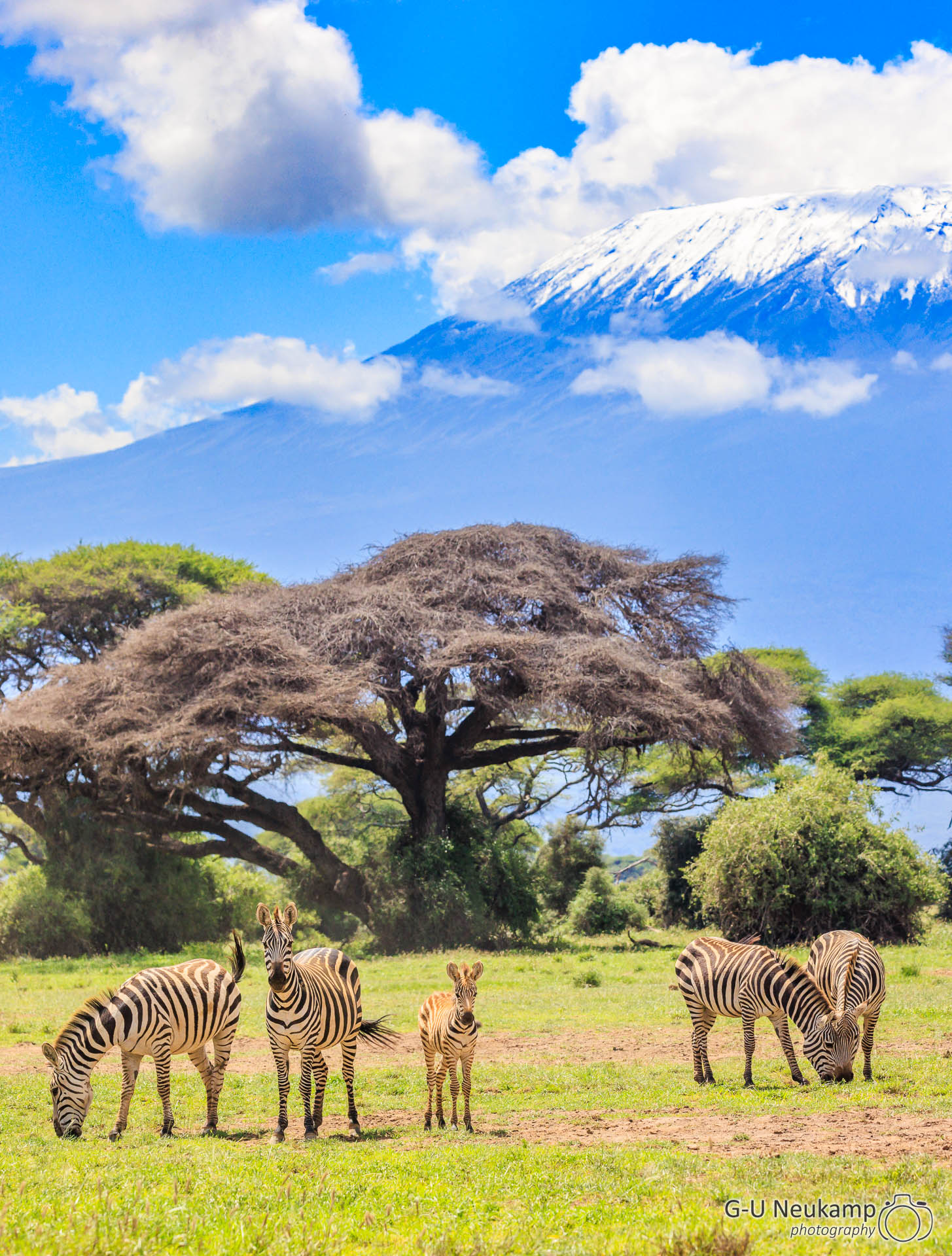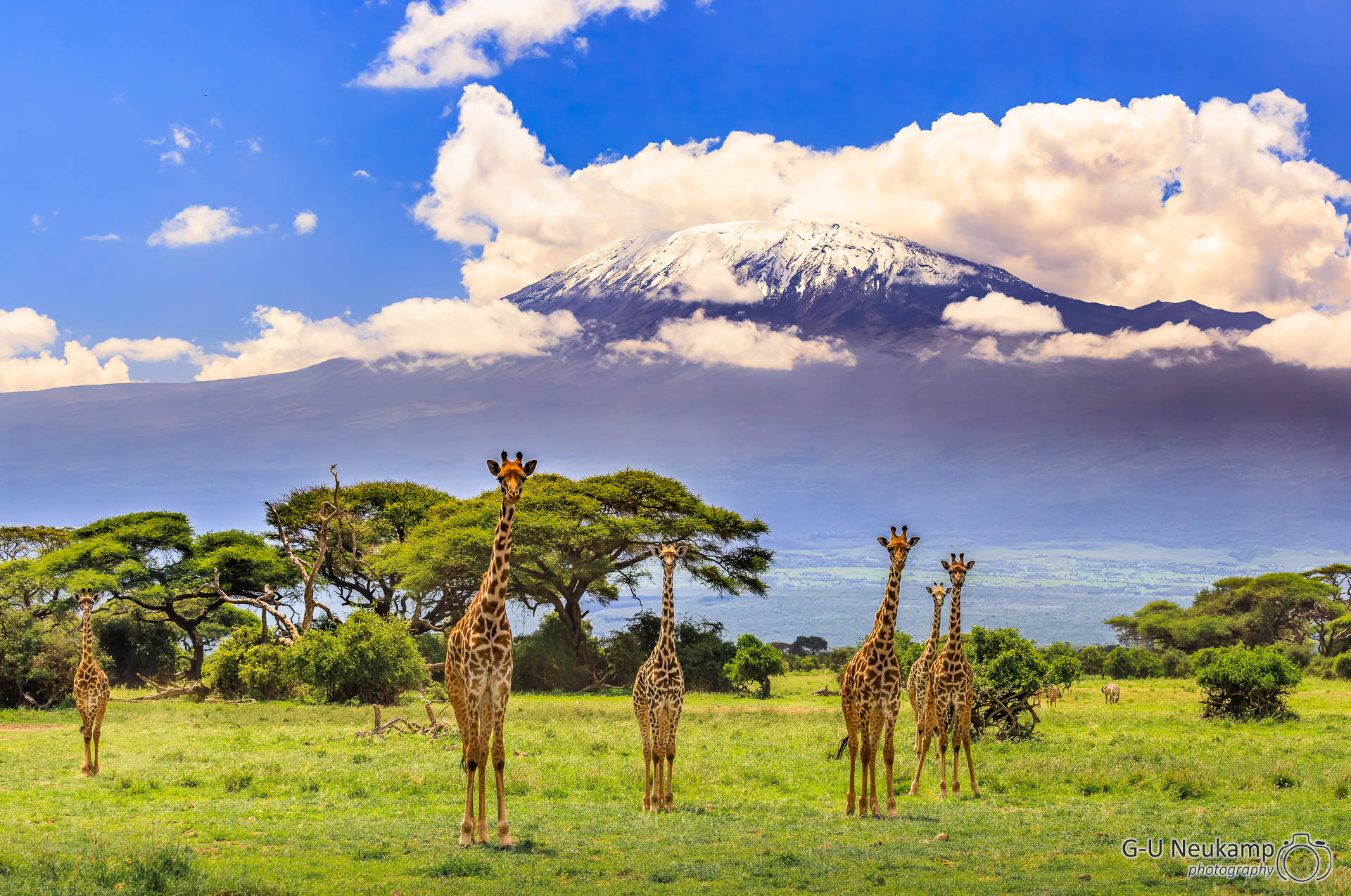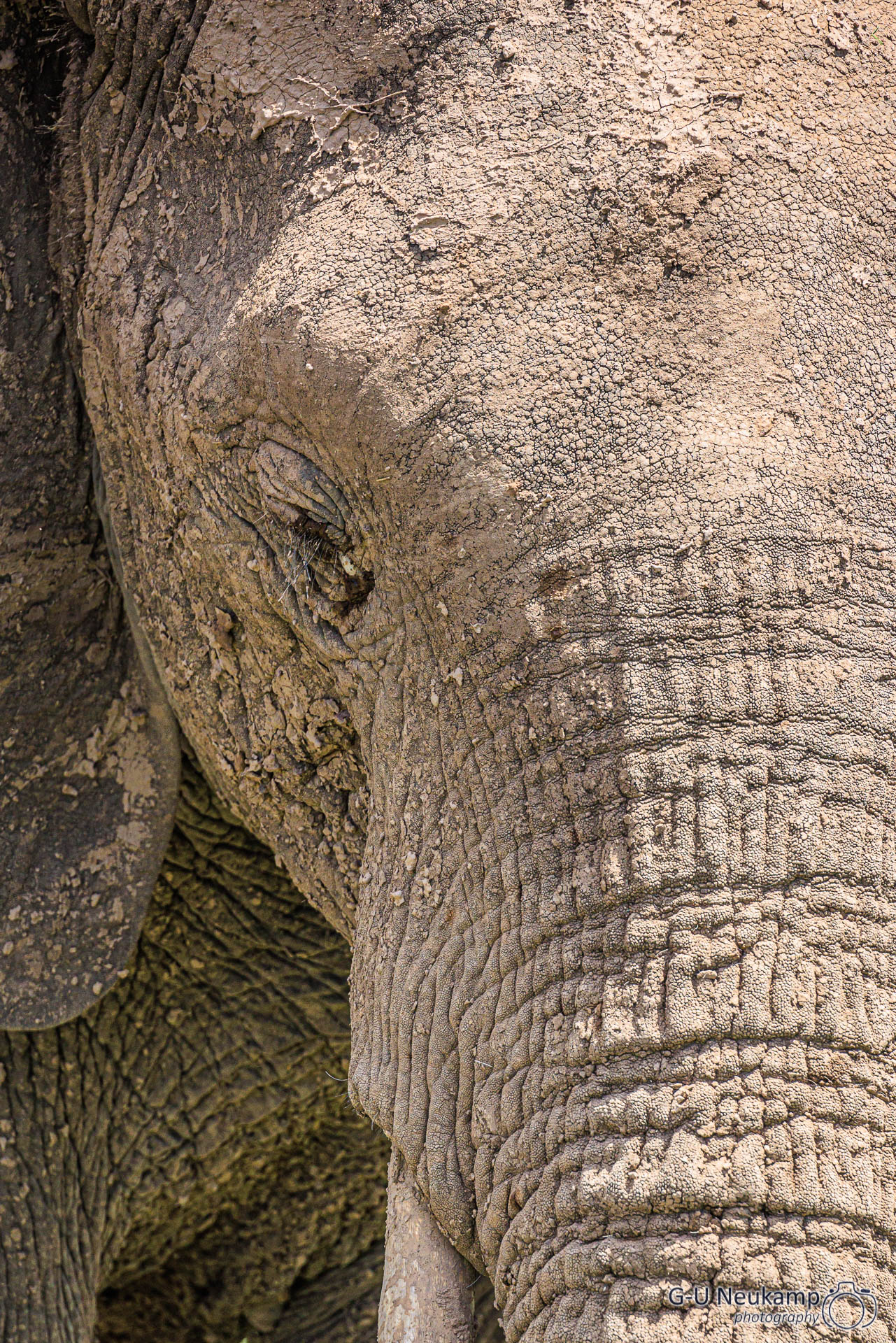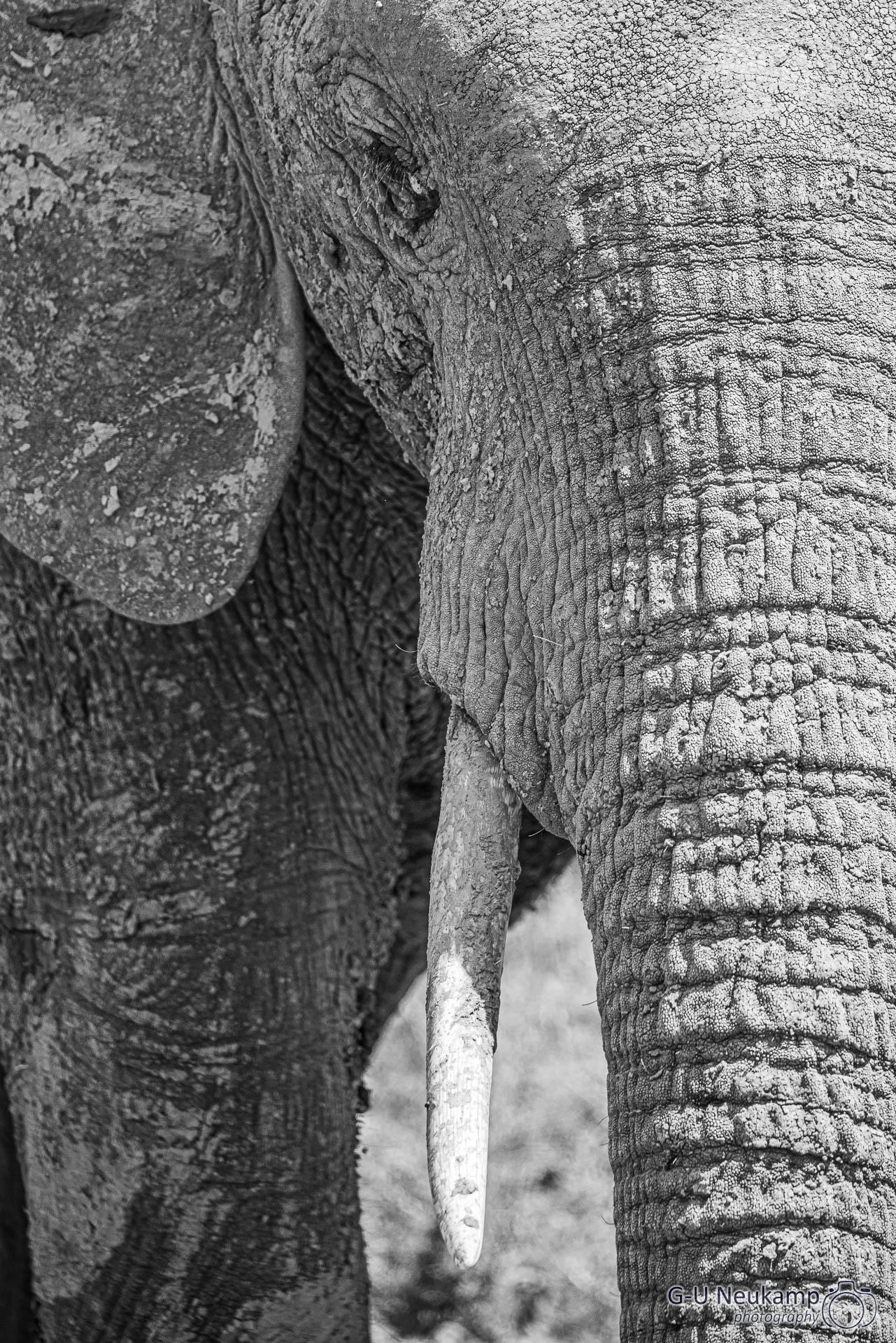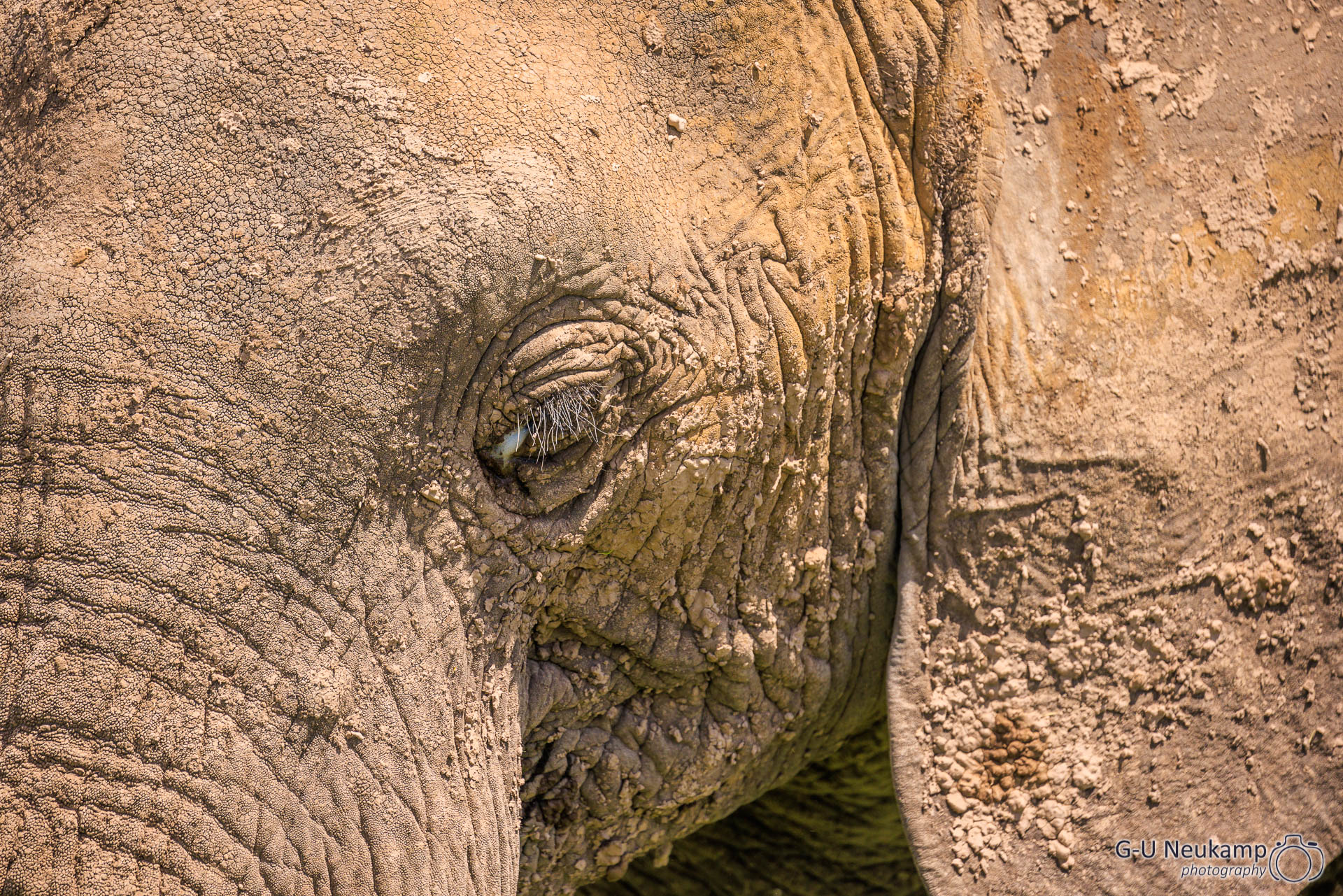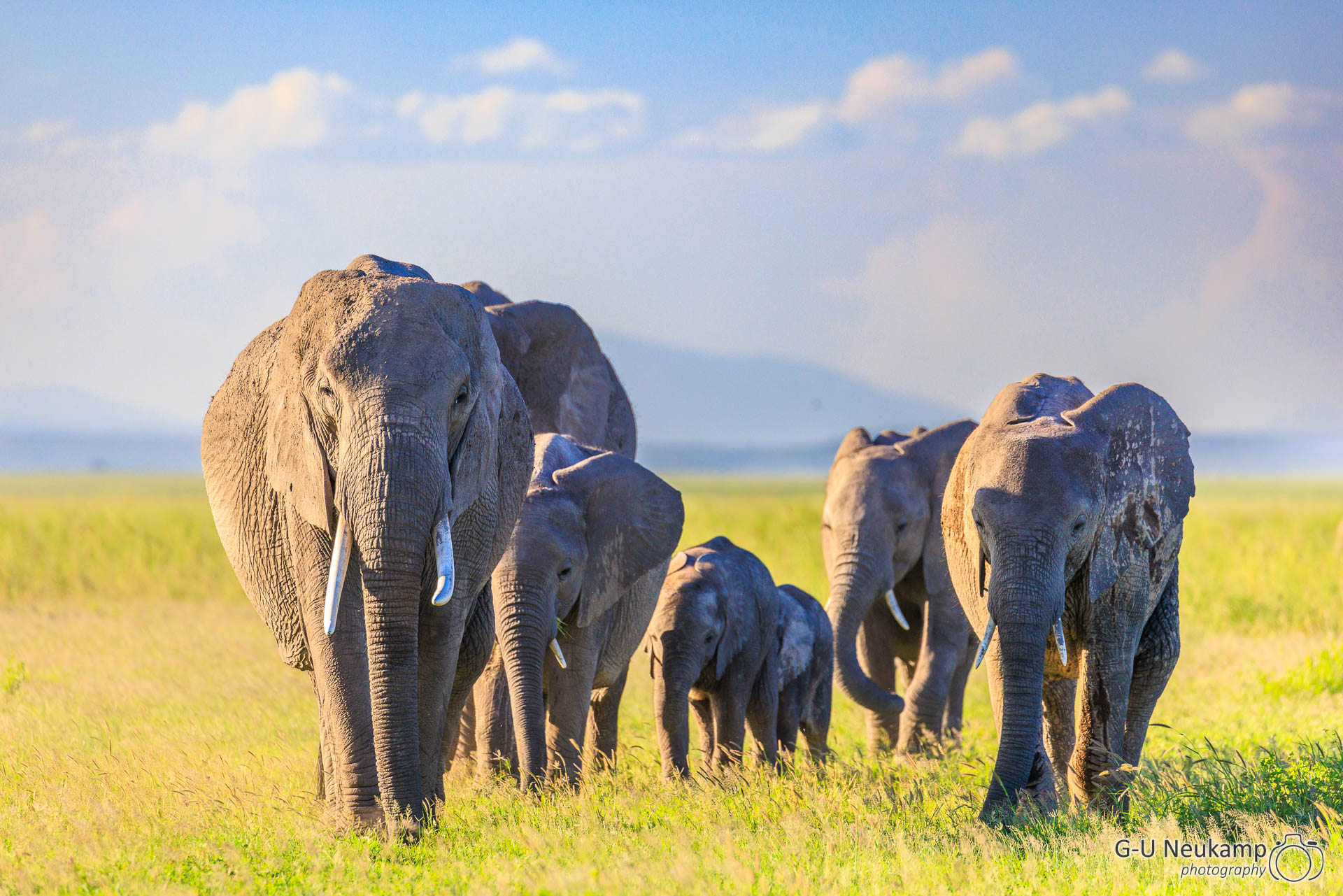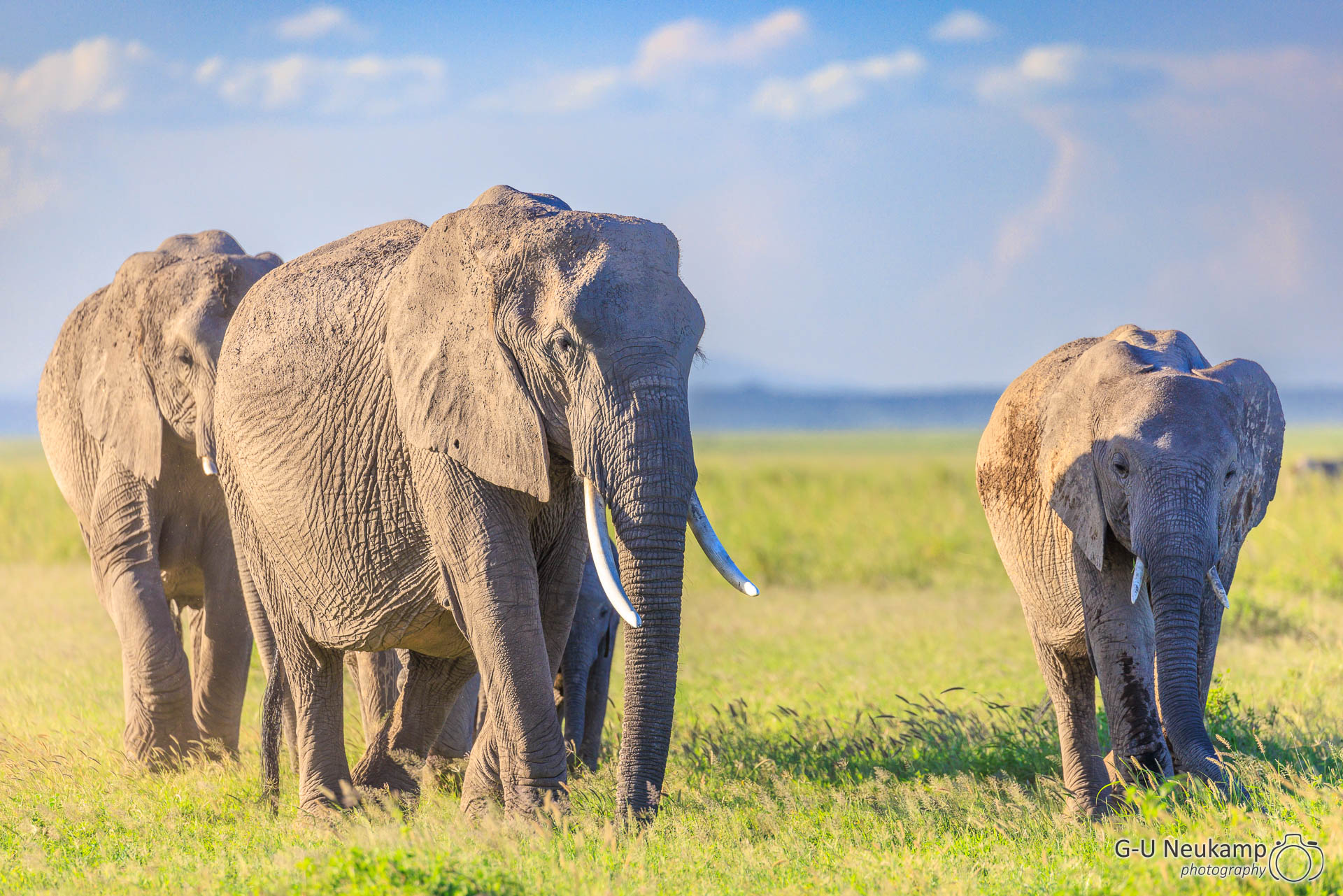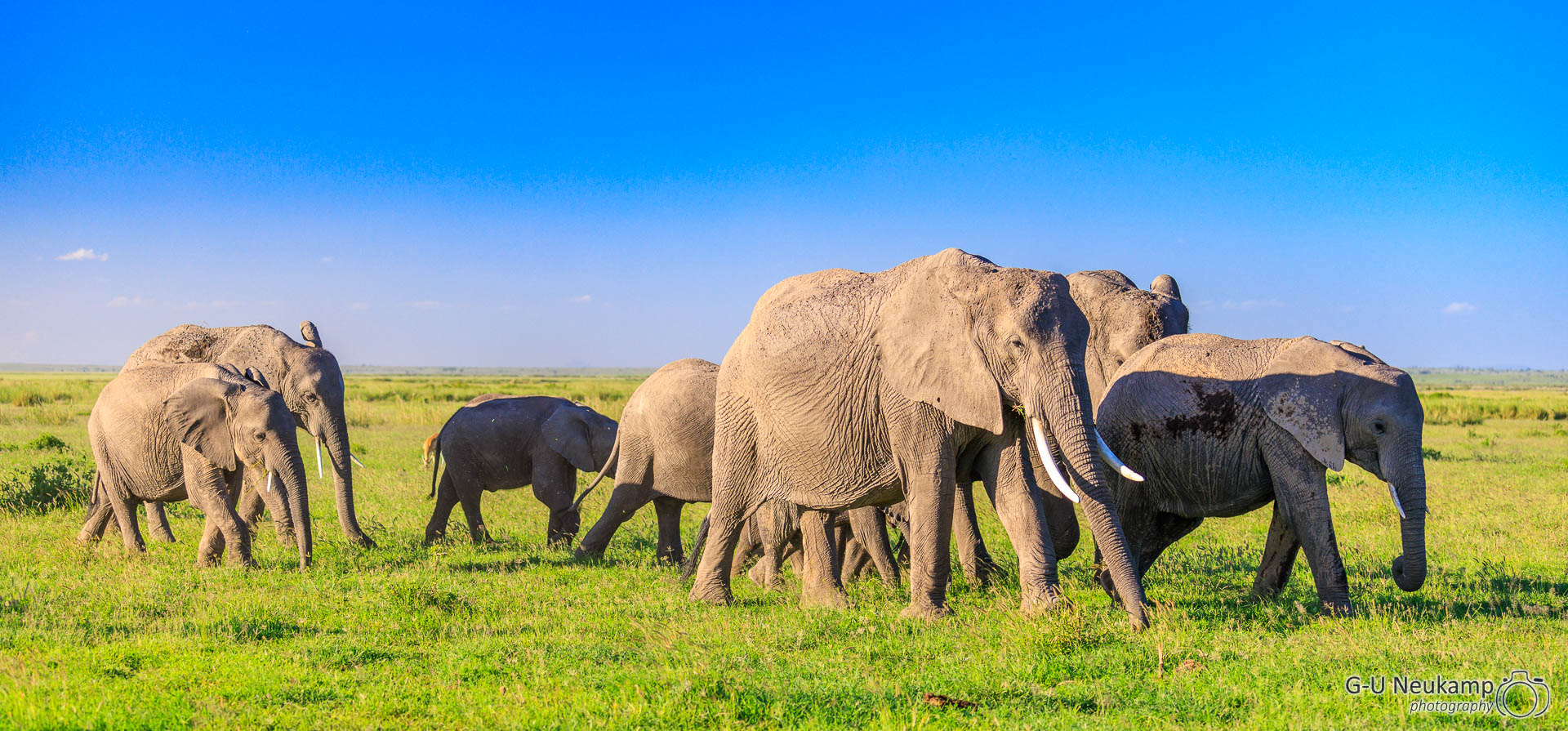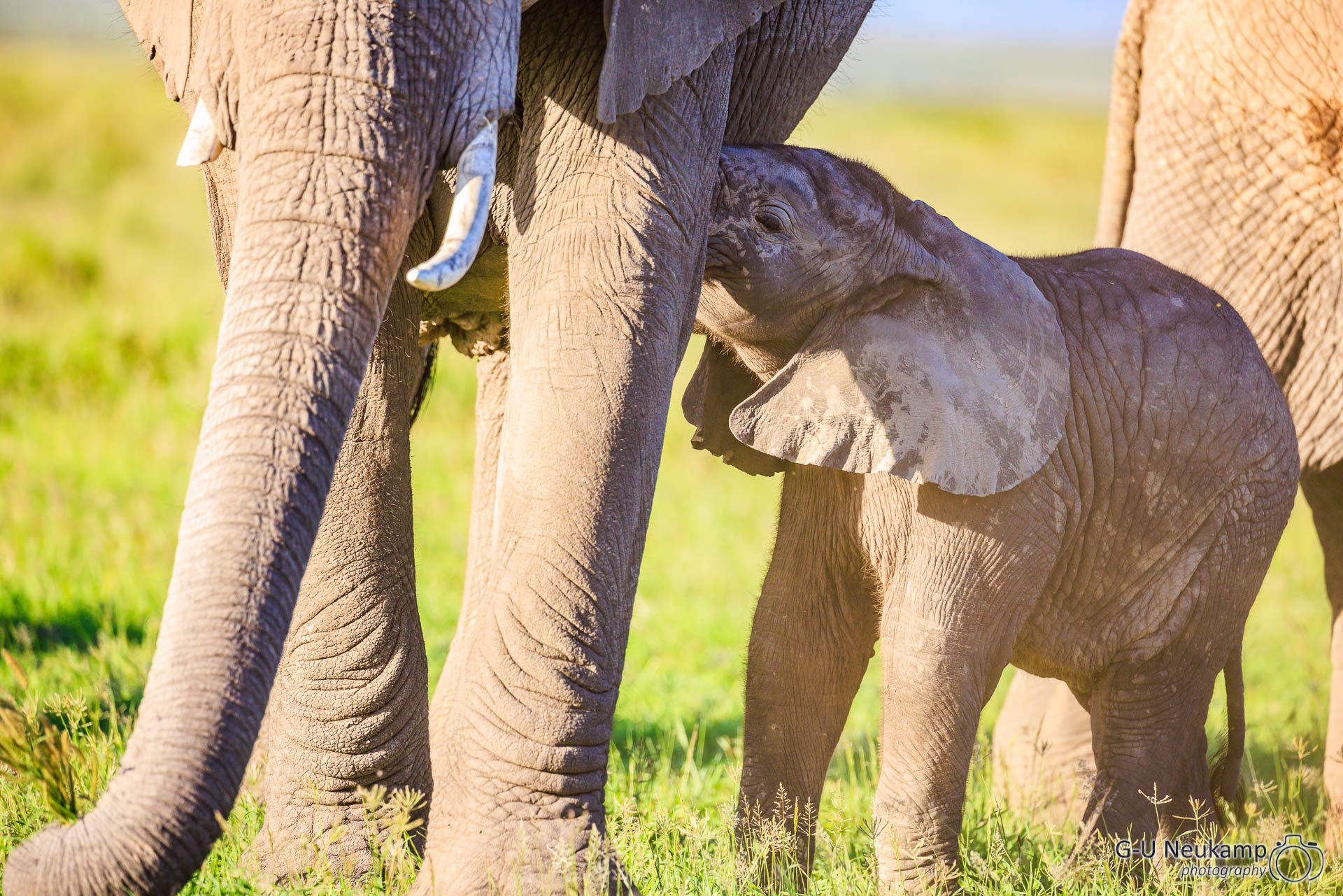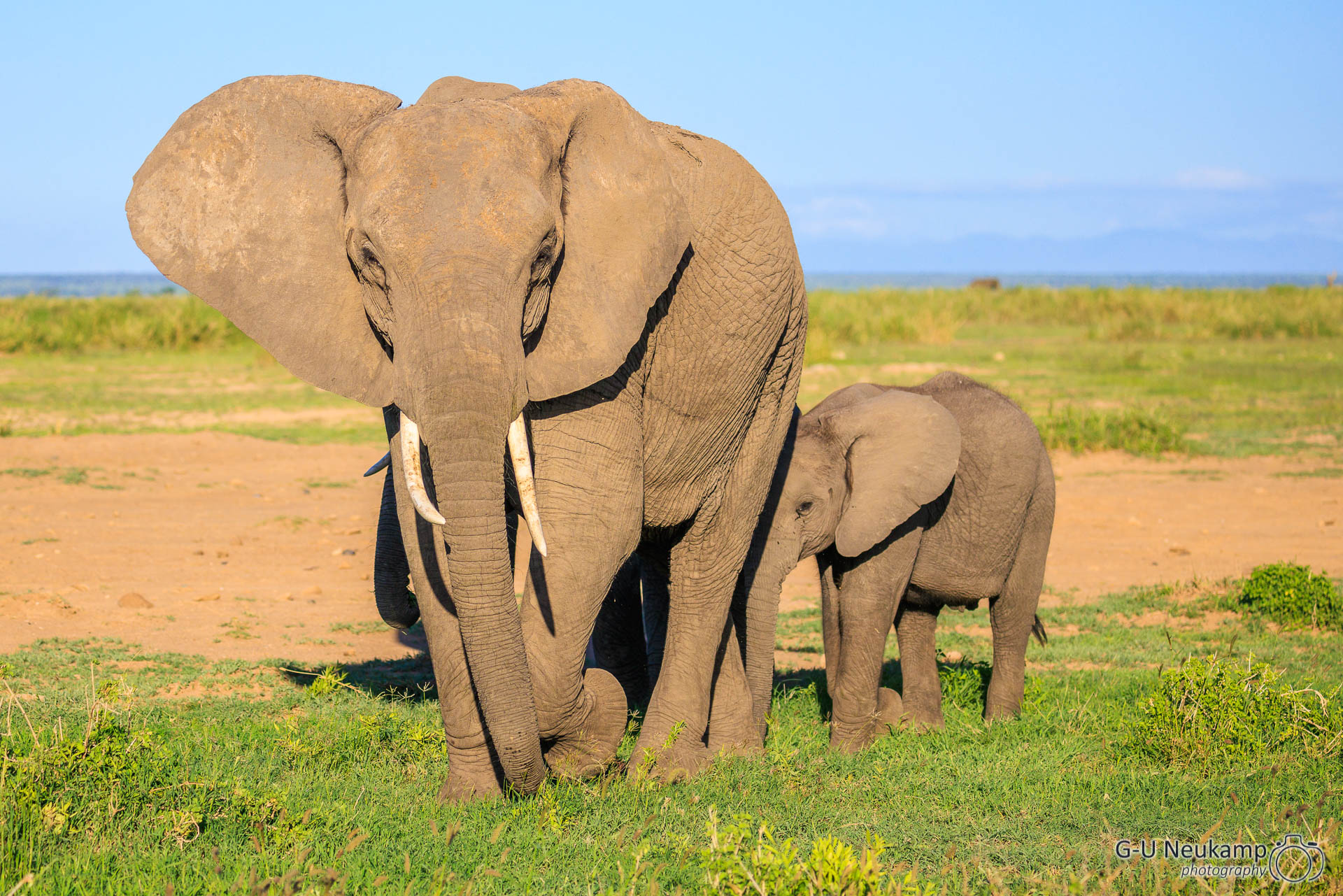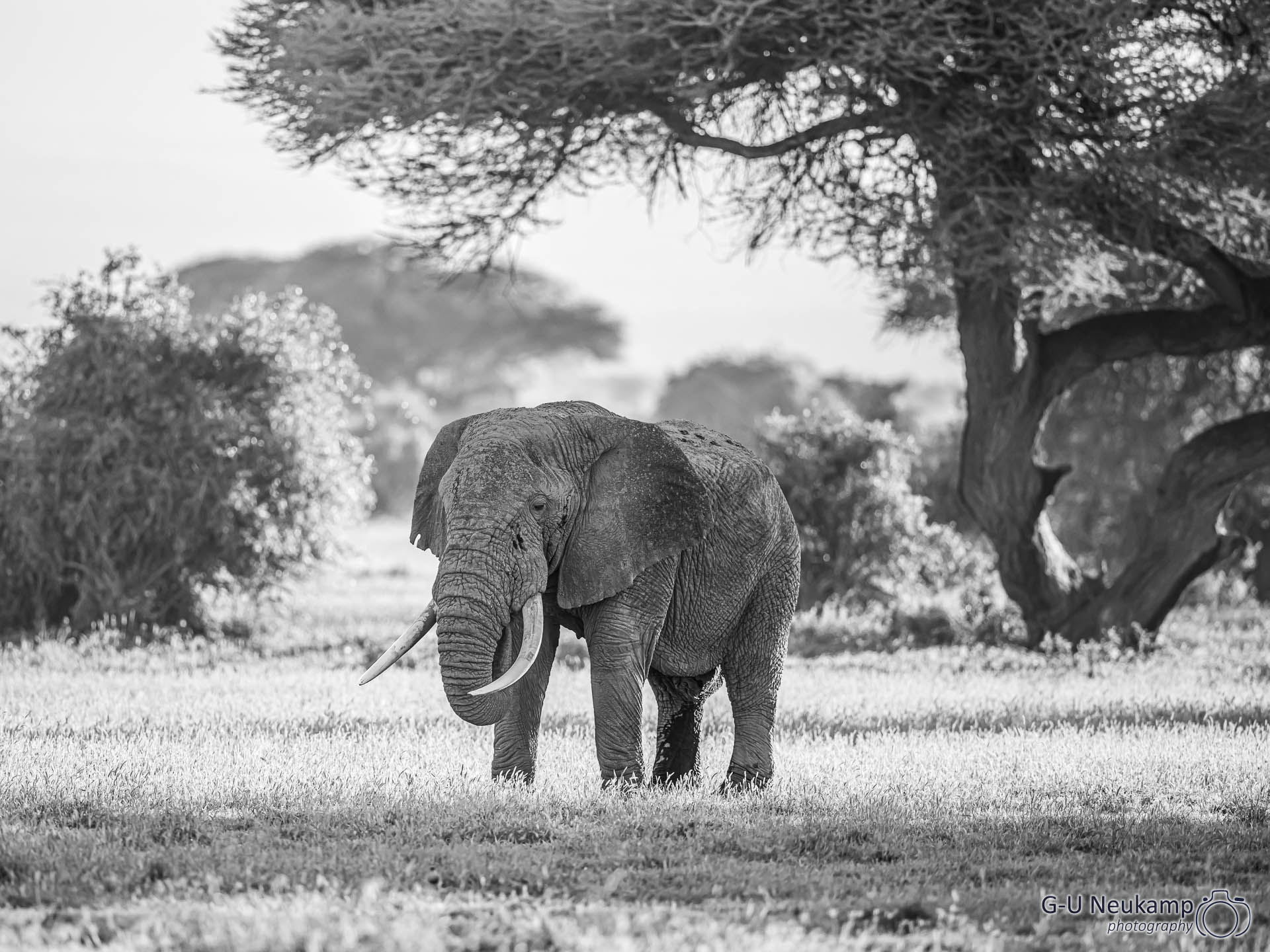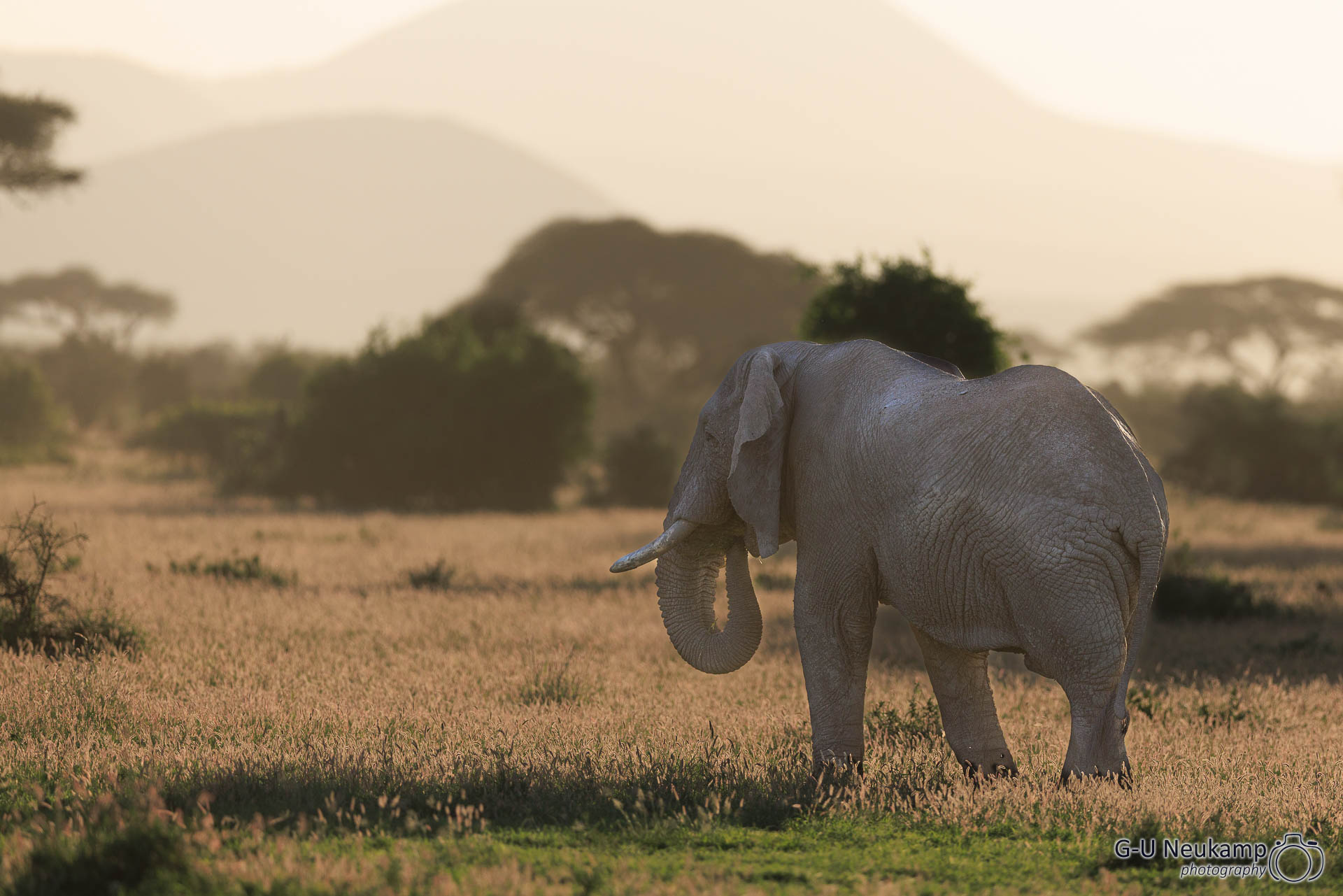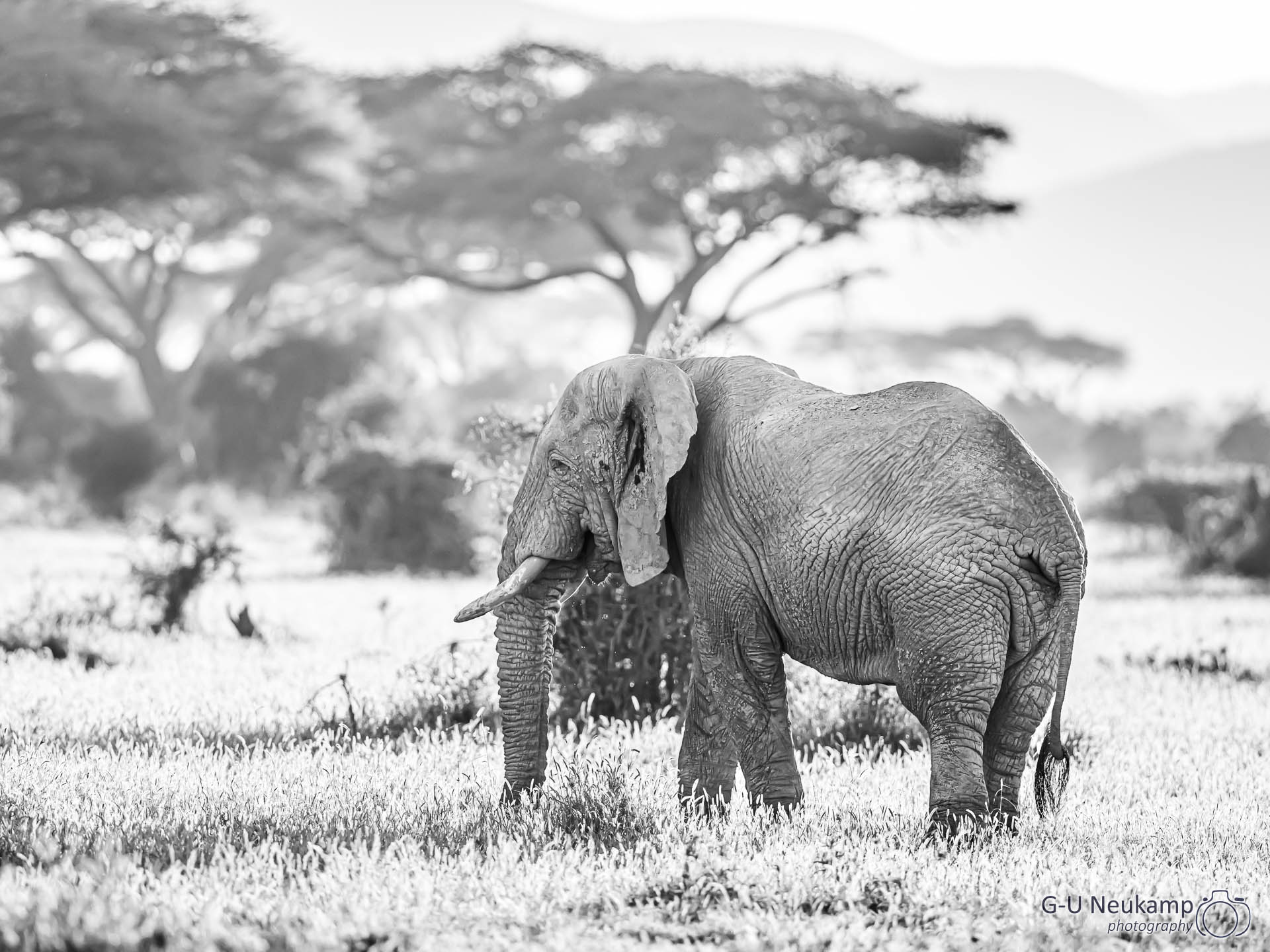Jan. 2, 2022 - Amboseli National Park
We met at 5:45am as planned still in the dark in the breakfast area of the camp. There we had fresh coffee and some cookies. Punctually at 6:00am we boarded the LandCruiser and drove with Caleb the short distance into the park. We could hardly believe our luck:
The slowly brightening sky was almost cloudless and Mount Kilimanjaro was even more visible than the day before. At first morning light, a lonely old and very impressive elephant bull stood right next to the track and looked at us with interest:
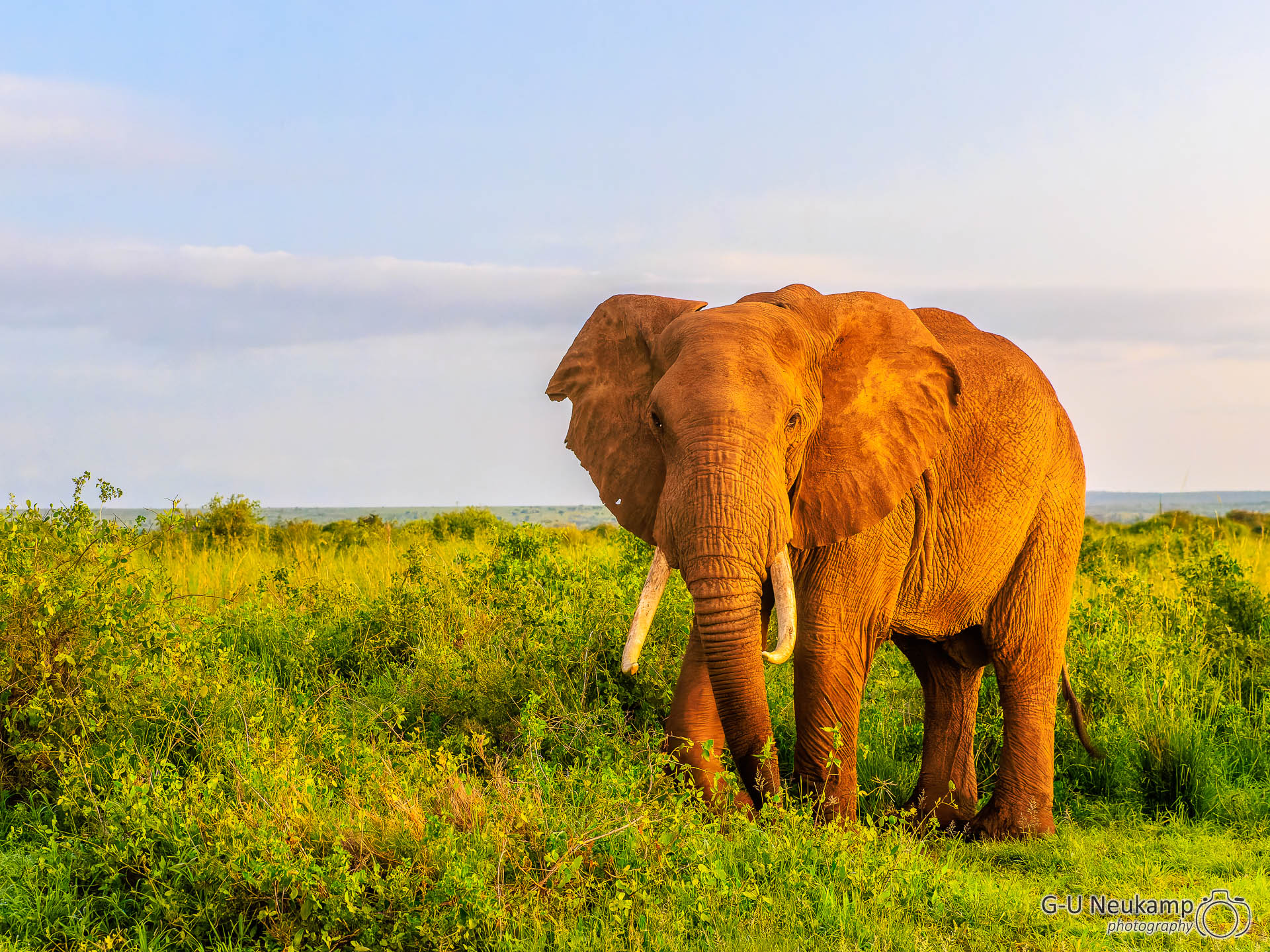
Then, in the slowly brightening dawn, the Kilimanjaro presented itself in all its beauty:
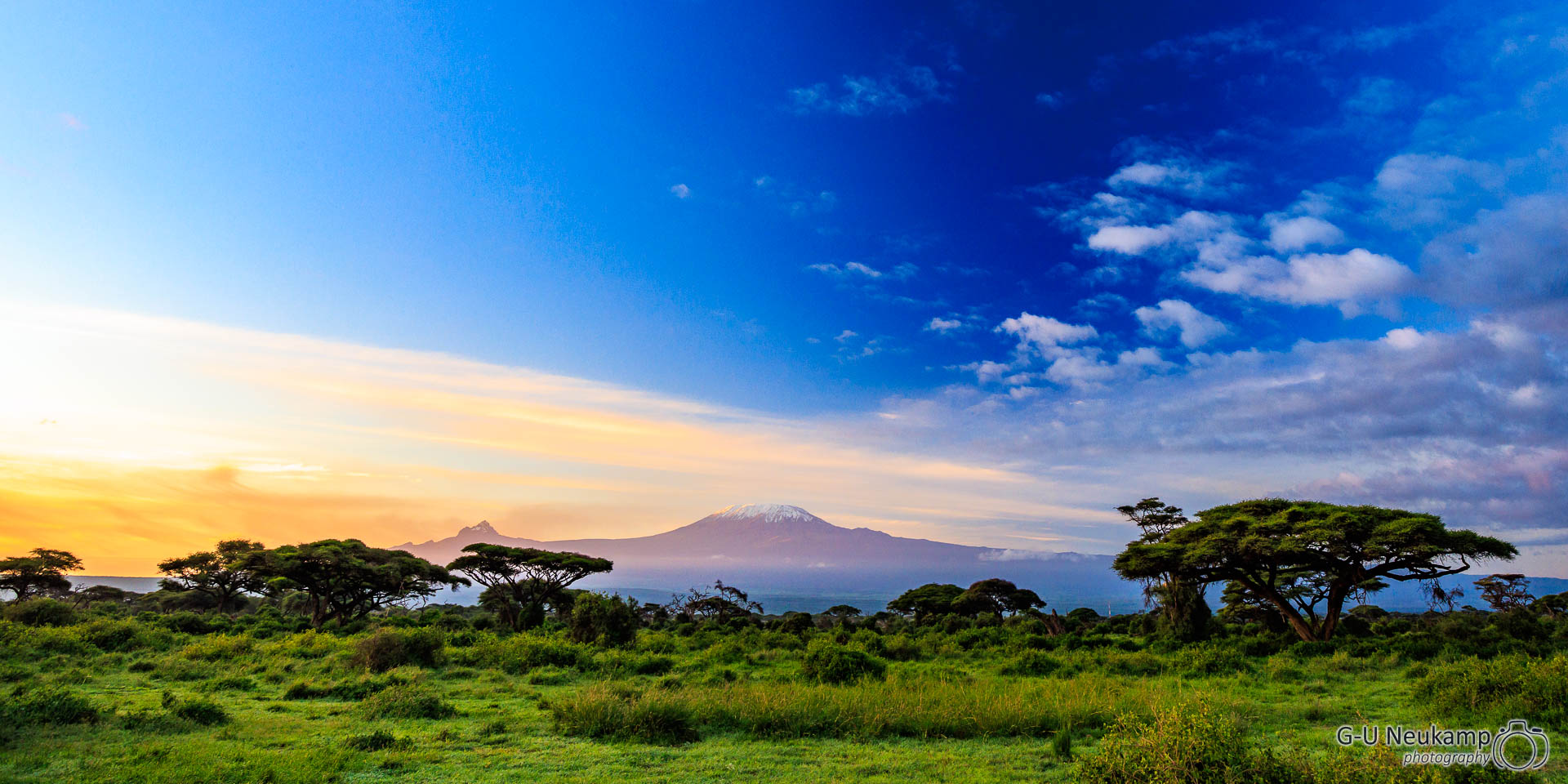
As the first sun rays reached the top of the mountain, we saw a larger group of elephants coming out of the forest in the distance. High above, a hot air balloon floated by, from there the view was certainly even more spectacular:

And here’s another close-up that shows off the mountain’s impressive height even better:
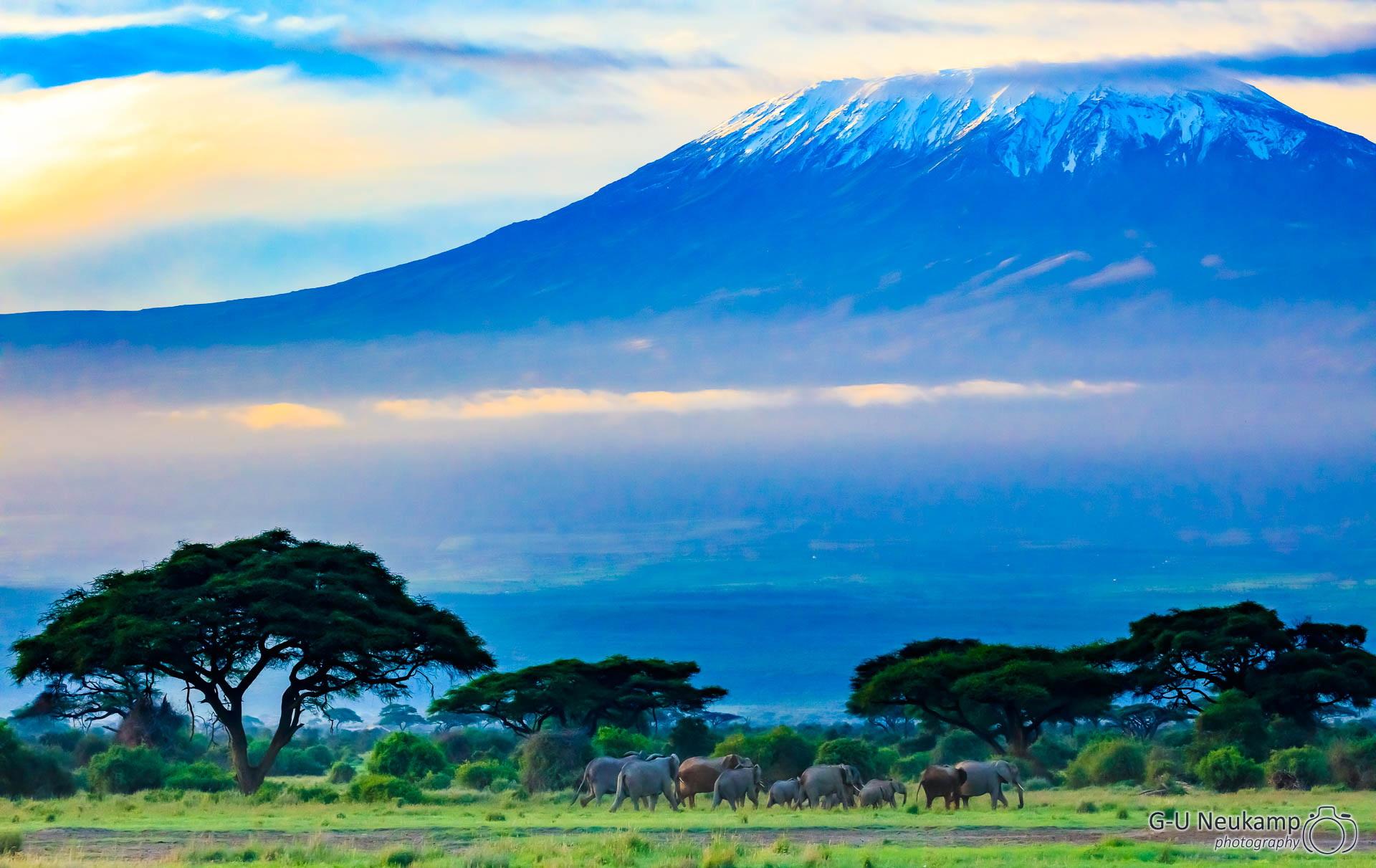
Slowly more and more elephants came out of the bush and moved across the track to the swamp:
Continuing our trip, we saw to our surprise a lot of crowned cranes. Harry was very enthusiastic, he likes the beautiful birds very much. Caleb told us that currently in Amboseli there would be something like a dating exchange for crowned cranes. The birds had come here to look for a new partner and presented themselves to their potential future mates in the proverbial best light. This resulted in very nice photo opportunities with the many attractive birds.
Here is another picture of a couple who had apparently already found each other in happiness. It reminded me of the famous scene from the classic movie “Casablanca”:
“Here’s looking at you, kid!”
Rick (Humphrey Bogart) to Ilsa (Ingrid Bergman)
in Casablanca (1942)
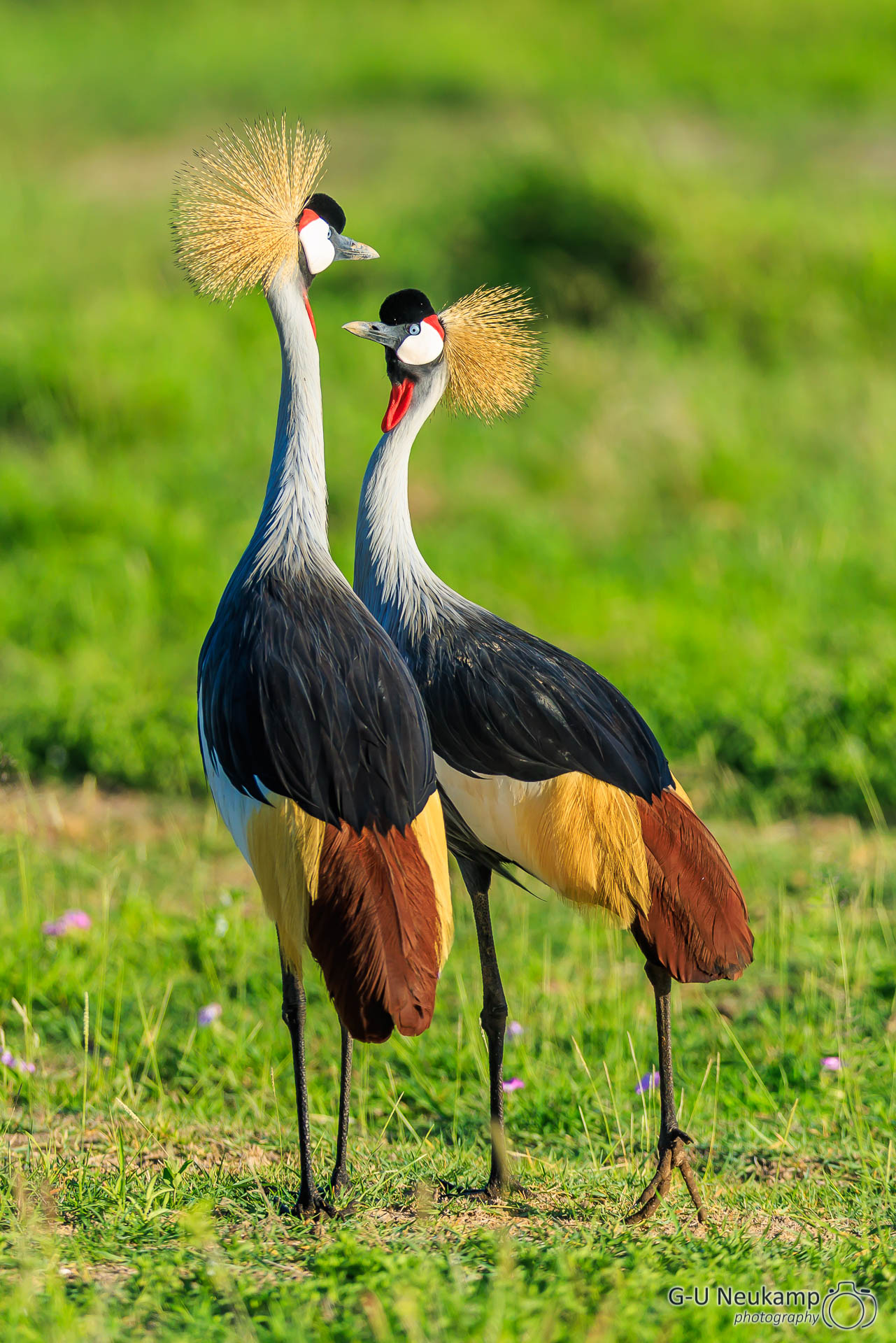
We then drove on to the vast expanse of water at Lake Amboseli to observe waterfowl. The water of the lake is strongly alkaline and therefore very appreciated by the flamingos. However, it is not suitable as drinking water for the elephants. They are drawn to the swamps, which are fed all year round by the meltwater of the Kilimanjaro glacier. At first, Kilimanjaro was reflecting very photogenically in the lake:
The scenery reminded me strongly of my pictures of Mt. Fuji, which we visited in Japan in 2014. At that time we had similar luck with the weather. This time we could observe a lot of water birds in the lake. First a series of a pelican slowly paddling by in front of Kilimanjaro in the background:
Afterwards we found flamingos again. This time a group of greater flamingos, which are much larger and rarer than the lesser flamingos, which we have seen more often in large groups - most recently in 2017 at Lake Bogoria.
But this time a large group of lesser flamingos had gathered in Lake Amboseli, too, which made a very nice scene again with the mighty Kilimanjaro in the background:
Afterwards we used the favor of the hour and completed our collection “animals in front of Mount Kilimanjaro” further with a pair of tawny eagles, water bucks, zebras and giraffes. Unfortunately, as the day’s temperature increased, the haze at the foot of Kilimanjaro slowly returned.
Then we left the park in increasing heat and drove back to Kibo Safari Camp for lunch and subsequent relaxation. On the way to the camp, some of the very numerous elephants posed for us next to the track. Here is a small selection of detailed photos of the pachyderms:
After another very rich and tasty lunch buffet, I again secured the many pictures of the morning. Afterwards we relaxed on our tent terrace looking at the Kilimanjaro.
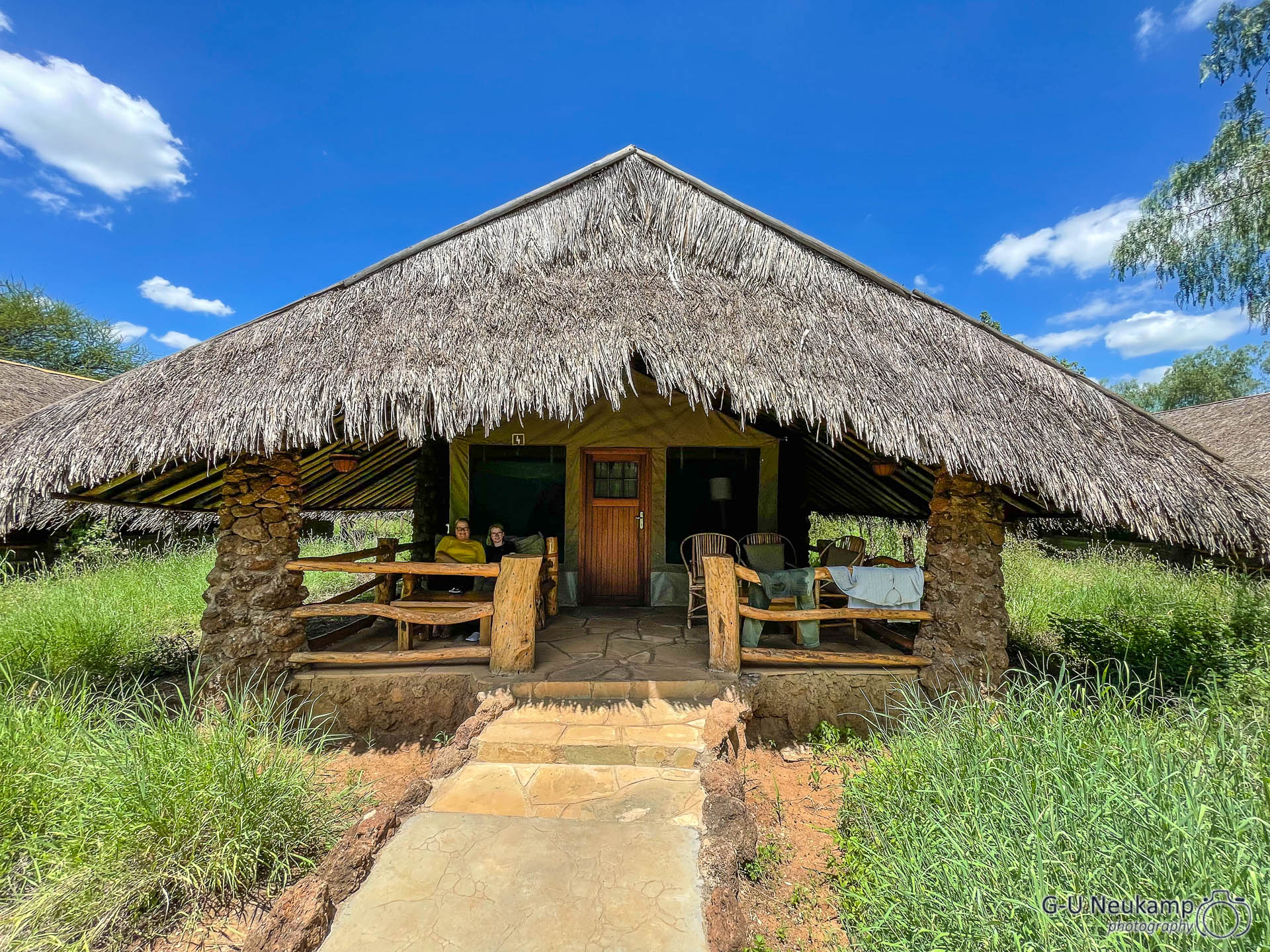
In the afternoon we went again to the gamedrive. We met for coffee in the bar at 3:50 pm, then we started again right away. Caleb was already waiting for us in the car.
The afternoon was dedicated to the elephants, which we encountered in large numbers. They move in large herds in the morning from the forests at the foot of Mount Kilimanjaro to the swamps, which are centrally located in the park and always carry water, and in the evening they return to the forests. On their way they pass a large dirt road in the park crossing their migration path, from which they can be observed very well. There were vast numbers of elephants of all ages to be seen. Some groups consisted of more than 50 animals.
At a later hour we discovered a stately old elephant, which made a very nice motif in the light of the evening sun. I have edited these shots in part in B&W and liked this atmosphere of light very much:
Then we went back to camp, where our usual evening ritual proceeded as planned. Around 10:00 pm we retired in our tents again. Tomorrow, after a short morning game drive, we will continue to our last station of the trip, Lions Bluff Lodge in the Lumo Conservancy.

